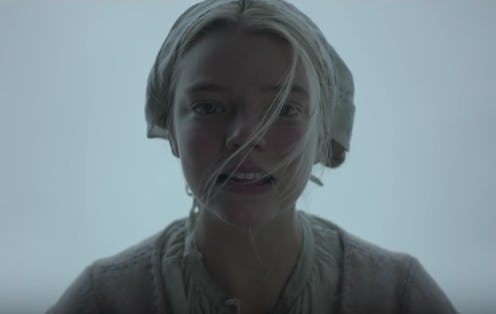
If the buzz is to be believed, Robert Eggers' directorial debut, The Witch, is going to be the scariest movie of 2016. The movie that had people talking at Sundance back in 2015 takes place in the 1630s, when Puritans in New England were in the throws of the infamous witch hunts. In these scary times, one Puritan family moves to the outskirts of town on the edge of a forrest, only to find themselves caught by terrifying witchcraft and unknown evils. After failed crops and the disappearance of a child, the family turns on their teenage daughter, Thomasin, convinced that she is a witch. Tales of supposed witch craft in the 17th Century are well known — think the Salem Witch Trials you learned about in history class — and, while there have been ample projects inspired by the true stories of the historical witch hunts, Thomasin of The Witch is not based on a real person.
Thomasin might not be based on a real person, but the film still maintains an eery accuracy. This is likely due to writer-director Eggers' rigorous research. Eggers drew much of his inspiration from folk tales about the witch hunts of the period and primary source documents, like diaries and court records, from which he learned phrases and other key elements used in the script. "A lot of the things the children say when they are possessed are supposedly things that children actually said when they were possessed," Eggers said in an interview with Gizmodo.
Eggers' period detail extended to how the sets were made, using period-appropriate materials and, sometimes, even period-appropriate tools. "If the witch is going to be real again, we have to be transported to the 17th century. End of story," he said. Adding to the authenticity of the film, Eggers shot in mostly natural light and using enhanced candle light to get a natural glow and look.
Period setting aside, Eggers wanted the film to explore the nature of the myth of the Puritanical witch. Using horror to deliver a very specific and feminist message. "The witch embodied men's fears and fantasies about women, good and bad, and also women's fears and ambivalences about motherhood in a male-dominated society," Eggers revealed to Filmmaker Magazine .
Though Thomasin might not be based on a real person, there were certainly many young women like her. And there continues to be young women suffering from similar sexist cultural norms who can relate to The Witch . Let's just hope we're not all going to be haunted by an actual witch, though.
Images: A24Films